Sardana Ivanova
NorQuAD: Norwegian Question Answering Dataset
May 03, 2023Abstract:In this paper we present NorQuAD: the first Norwegian question answering dataset for machine reading comprehension. The dataset consists of 4,752 manually created question-answer pairs. We here detail the data collection procedure and present statistics of the dataset. We also benchmark several multilingual and Norwegian monolingual language models on the dataset and compare them against human performance. The dataset will be made freely available.
UniMorph 4.0: Universal Morphology
May 10, 2022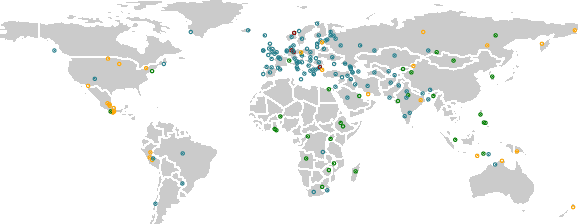

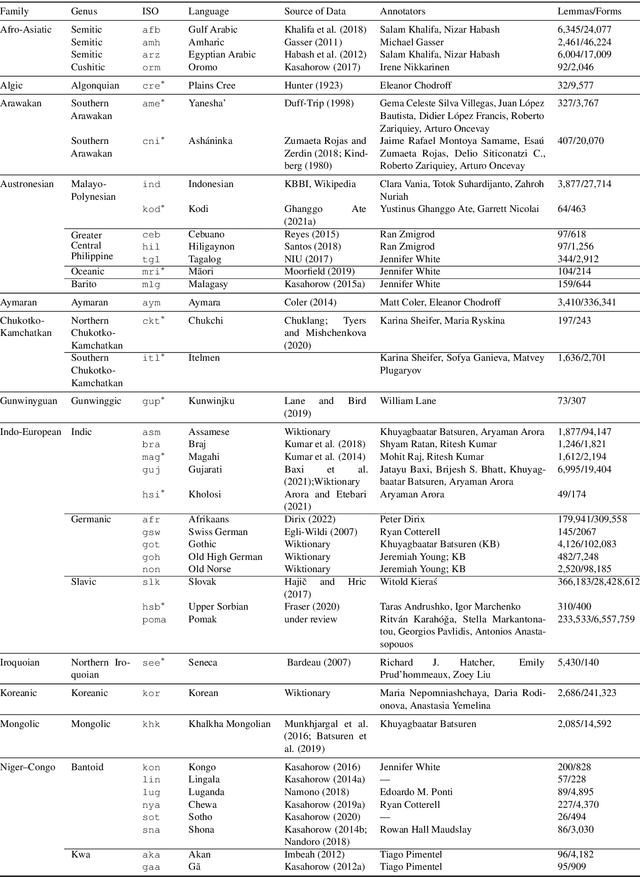
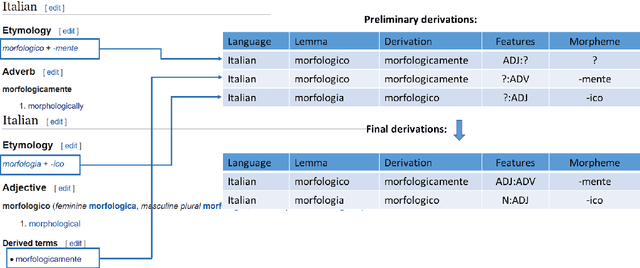
Abstract:The Universal Morphology (UniMorph) project is a collaborative effort providing broad-coverage instantiated normalized morphological inflection tables for hundreds of diverse world languages. The project comprises two major thrusts: a language-independent feature schema for rich morphological annotation and a type-level resource of annotated data in diverse languages realizing that schema. This paper presents the expansions and improvements made on several fronts over the last couple of years (since McCarthy et al. (2020)). Collaborative efforts by numerous linguists have added 67 new languages, including 30 endangered languages. We have implemented several improvements to the extraction pipeline to tackle some issues, e.g. missing gender and macron information. We have also amended the schema to use a hierarchical structure that is needed for morphological phenomena like multiple-argument agreement and case stacking, while adding some missing morphological features to make the schema more inclusive. In light of the last UniMorph release, we also augmented the database with morpheme segmentation for 16 languages. Lastly, this new release makes a push towards inclusion of derivational morphology in UniMorph by enriching the data and annotation schema with instances representing derivational processes from MorphyNet.
Evaluating Multiway Multilingual NMT in the Turkic Languages
Sep 13, 2021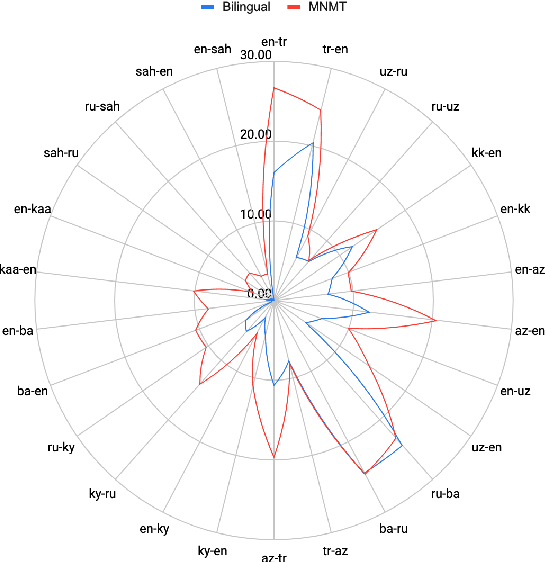
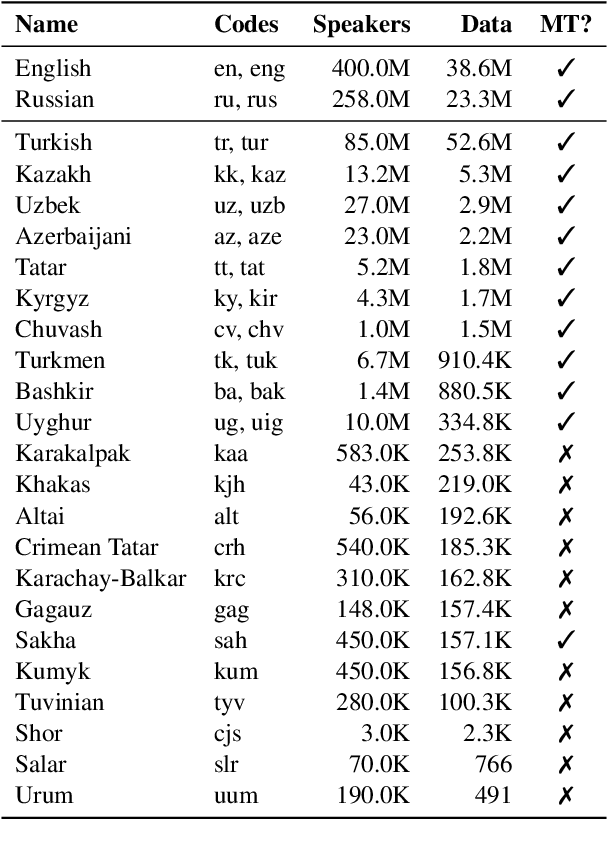
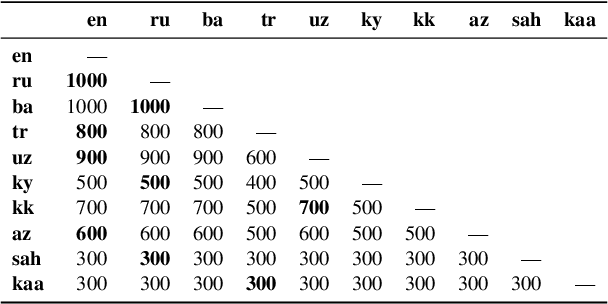
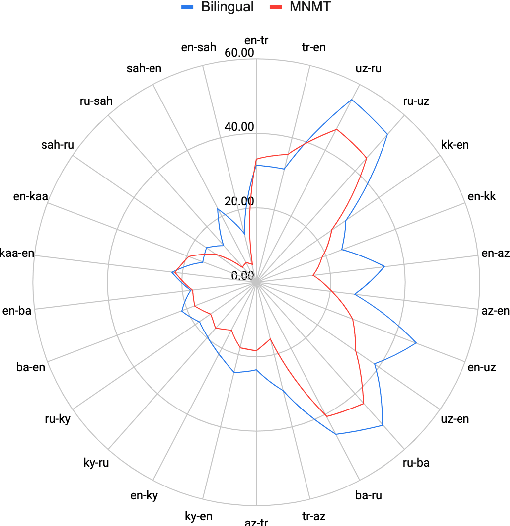
Abstract:Despite the increasing number of large and comprehensive machine translation (MT) systems, evaluation of these methods in various languages has been restrained by the lack of high-quality parallel corpora as well as engagement with the people that speak these languages. In this study, we present an evaluation of state-of-the-art approaches to training and evaluating MT systems in 22 languages from the Turkic language family, most of which being extremely under-explored. First, we adopt the TIL Corpus with a few key improvements to the training and the evaluation sets. Then, we train 26 bilingual baselines as well as a multi-way neural MT (MNMT) model using the corpus and perform an extensive analysis using automatic metrics as well as human evaluations. We find that the MNMT model outperforms almost all bilingual baselines in the out-of-domain test sets and finetuning the model on a downstream task of a single pair also results in a huge performance boost in both low- and high-resource scenarios. Our attentive analysis of evaluation criteria for MT models in Turkic languages also points to the necessity for further research in this direction. We release the corpus splits, test sets as well as models to the public.
A Large-Scale Study of Machine Translation in the Turkic Languages
Sep 09, 2021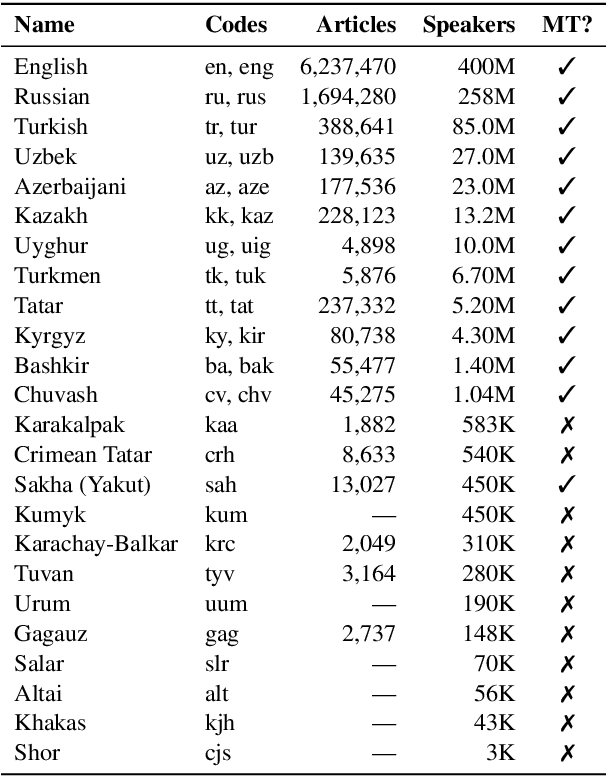
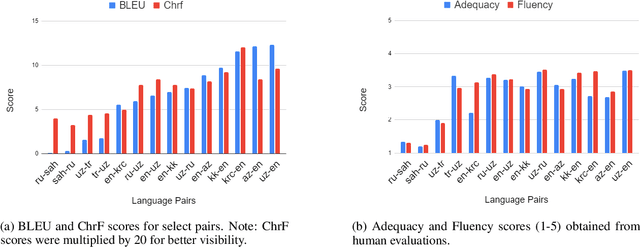
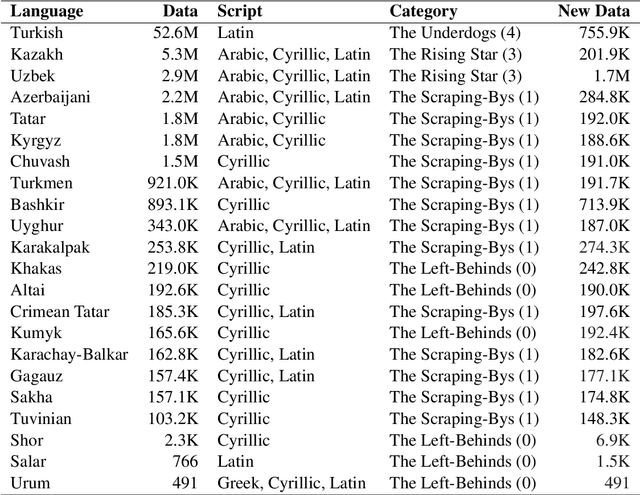
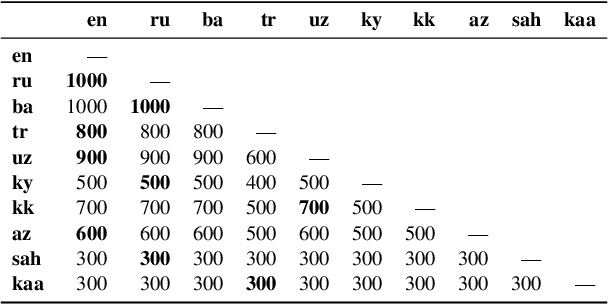
Abstract:Recent advances in neural machine translation (NMT) have pushed the quality of machine translation systems to the point where they are becoming widely adopted to build competitive systems. However, there is still a large number of languages that are yet to reap the benefits of NMT. In this paper, we provide the first large-scale case study of the practical application of MT in the Turkic language family in order to realize the gains of NMT for Turkic languages under high-resource to extremely low-resource scenarios. In addition to presenting an extensive analysis that identifies the bottlenecks towards building competitive systems to ameliorate data scarcity, our study has several key contributions, including, i) a large parallel corpus covering 22 Turkic languages consisting of common public datasets in combination with new datasets of approximately 2 million parallel sentences, ii) bilingual baselines for 26 language pairs, iii) novel high-quality test sets in three different translation domains and iv) human evaluation scores. All models, scripts, and data will be released to the public.
 Add to Chrome
Add to Chrome Add to Firefox
Add to Firefox Add to Edge
Add to Edge